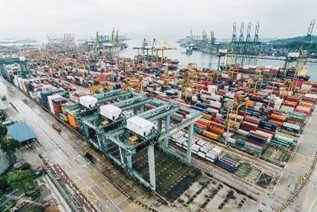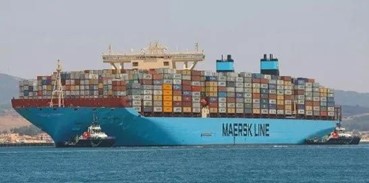Due to the continued impact of the Covid-19 epidemic, the international logistics market has been experiencing massive price hikes, shortages of space and containers, and various other situations since the second half of 2020. The China Export Container Tariff Composite Index reached 1,658.58 points at the end of December last year, a new high in nearly 12 years.
Recent geopolitical tensions have once again made international logistics and supply chains the focus of attention within the industry. Although all parties are actively adjusting and giving countermeasures, the remarkably high prices and congestion of international logistics this year still exist and affect international community development.
Generally speaking, the global supply chain dilemma brought about by the epidemic impacts all walks of life, including the international logistics industry. It is bound to face conditions such as high fluctuations in freight rates and capacity restructuring. In this complex environment, we need to grasp and explore the development trend of international logistics
I. The contradiction between the supply and demand of freight capacity still exists.
(The image is from the internet and will be removed if infringed upon)
The international logistics industry has always suffered the capacity conflict between supply and demand, which has been deepening in the past two years. The epidemic outbreak has intensified the contradictions in capacity and tensions between supply and demand. The distribution, transport, and warehousing components of international logistics cannot be connected quickly and efficiently. Vessels and personnel are not able to meet the market demand. Shortage of containers, space, and personnel, escalating freight rates, and congestion at ports and on the routes have become major problems.
In 2022, many countries have adopted a series of economic recovery measures, which have relatively eased the pressure on international logistics. However, the contradiction between capacity supply and demand caused by the structural mismatch between capacity allocation and actual demand cannot be corrected in the short term. Such a contradiction will continue to exist this year.
II. The industry mergers and acquisitions increase.
(The image is from the internet and will be removed if infringed upon)
Over the past two years, M&A in the international logistics industry has accelerated considerably. While small enterprises continue to integrate, large enterprises and giants seize opportunities to acquire, such as Easysent Group’s acquisition of Goblin Logistics Group and Maersk’s acquisition of HUUB, a Portuguese e-commerce logistics company. Logistics resources grow centralized by the head enterprises.
The acceleration of M&A among international logistics enterprises is due to potential uncertainties and realistic pressures. Moreover, it’s also because some enterprises are preparing for listing. Therefore, they need to expand their product lines, optimize their service capabilities, enhance their market competitiveness, and improve the stability of their logistics services.
III. Continued investment in emerging technologies
(The image is from the internet and will be removed if infringed upon)
Many problems arise for international logistics due to the ongoing epidemic, such as business development, customer maintenance, labor costs, and capital turnover. Some small and medium-sized international logistics enterprises have started to seek changes, and digital technology is a good choice. Some enterprises seek cooperation with industry giants or international logistics platforms to better empower their business.
IV. The development of green logistics accelerates
(The image is from the internet and will be removed if infringed upon.)
In recent years, greenhouse gas emissions have been one of the leading causes of global climate change. Therefore, the green and low-carbon transformation of international logistics has become a consensus in the industry, and the target of carbon peaking and neutrality is constantly mentioned. China plans to achieve “carbon peaking” by 2030 and “carbon neutrality” by 2060. Other countries have also introduced corresponding targets. Hence, green logistics will become a new trend.
Source: Kuajingzhidao
https://www.ikjzd.com/articles/155779
Post time: Jun-07-2022




